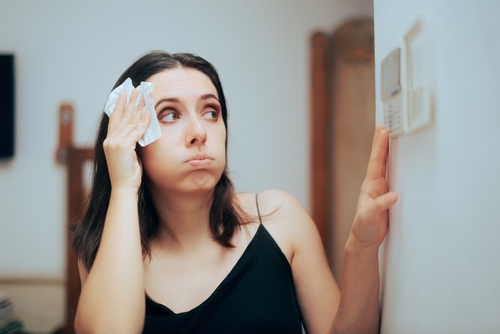How Regular AC Maintenance Can Lead to Energy Efficiency

Maintaining your air conditioning system is not only essential for ensuring your comfort during hot summer months but also plays a significant role in enhancing energy efficiency. Regular maintenance of your AC unit can help in optimizing its performance, reducing energy consumption, and extending its lifespan. In this blog, we will explore the importance of regular AC maintenance in promoting energy efficiency and providing you with cost savings in the long run.
Benefits of Regular AC Maintenance
Regular maintenance of your air conditioning system offers several benefits, including improved energy efficiency. When your AC unit is well-maintained, it operates more efficiently, requiring less energy to cool your home. This means that you can enjoy a comfortable indoor environment without the high energy bills that come with an inefficient system.
In addition to energy efficiency, regular AC maintenance can help prevent costly repairs and breakdowns. By addressing minor issues early on, you can avoid major malfunctions that could leave you without air conditioning during the peak of summer. This not only saves you money on repair costs but also ensures that your AC system operates at its best, providing you with reliable cooling throughout the season.
Key Maintenance Tasks for Energy Efficiency
To enhance energy efficiency and maximize the performance of your air conditioning system, there are several key maintenance tasks that you should perform regularly. These tasks can help ensure that your AC unit operates efficiently, reduces energy consumption, and saves you money on utility bills. Here are some essential maintenance tasks for promoting energy efficiency:
1. Air Filter Replacement: One of the simplest yet most effective maintenance tasks is regularly replacing the air filter in your AC unit. A clogged or dirty air filter can restrict airflow, forcing your system to work harder to cool your home. By replacing the air filter every 1-3 months, you can improve airflow, reduce energy consumption, and promote energy efficiency.
2. Coil Cleaning: Another important maintenance task is cleaning the evaporator and condenser coils in your AC unit. Over time, these coils can accumulate dirt and debris, reducing their ability to transfer heat efficiently. By cleaning the coils annually, you can improve heat transfer, increase energy efficiency, and prevent system breakdowns.
3. Refrigerant Levels Check: Checking and maintaining proper refrigerant levels is essential for the efficient operation of your air conditioning system. Low refrigerant levels can cause your AC unit to work harder, increasing energy consumption and potentially damaging the compressor. Regularly checking and maintaining the correct refrigerant levels can help optimize system performance and energy efficiency.
4. Duct Inspection: Inspecting and sealing leaks in your ductwork is another important maintenance task for improving energy efficiency. Leaky ducts can allow cool air to escape, reducing the efficiency of your AC system and increasing energy consumption. By sealing duct leaks, you can improve airflow, reduce energy wastage, and enhance overall energy efficiency.
5. Thermostat Calibration: Calibrating your thermostat regularly ensures that your AC system operates as efficiently as possible. A properly calibrated thermostat helps maintain consistent temperatures and prevents your system from overworking or running unnecessarily. By adjusting the thermostat settings and scheduling regular temperature checks, you can optimize your AC system’s performance and energy efficiency.
Long-Term Benefits of Energy Efficiency
Investing in regular AC maintenance to promote energy efficiency can provide several long-term benefits for homeowners. By maintaining your AC unit properly, you can extend its lifespan, reduce the risk of costly repairs, and ensure that it operates efficiently for years to come. Additionally, energy-efficient systems consume less energy, leading to lower utility bills and cost savings over time.
Energy-efficient air conditioning systems also have a positive impact on the environment by reducing carbon emissions and energy consumption. By minimizing your home’s energy usage, you can lower your carbon footprint and contribute to a more sustainable future. Choosing energy-efficient appliances and practices not only benefits your wallet but also helps protect the planet for future generations.
Summary
Regular AC maintenance plays a crucial role in enhancing energy efficiency, reducing energy consumption, and providing homeowners with cost savings in the long run. By performing key maintenance tasks such as air filter replacement, coil cleaning, refrigerant level checks, duct inspection, and thermostat calibration, you can optimize your air conditioning system’s performance and promote energy efficiency.
Need HVAC Services in St. Louis, MO?
Keep cool or stay warm with Ashley Brothers Heating & Cooling. Since 1999, Ashley Brothers have been providing residential and commercial services to the St. Louis and Jefferson County area. We specialize in the installation of new equipment, heating and cooling repair, and furnace cleaning. Craftsmanship is important, equipment choice is too. We work with only top brands like Amana, Goodman, York, and McLain. It is understandable that replacing or upgrading your equipment can be daunting. Ask us about financing. We repair all heating and cooling equipment brands. Heating and cooling repairs can happen at random, take advantage of our 24-hour emergency service. Call us today about your concerns.

